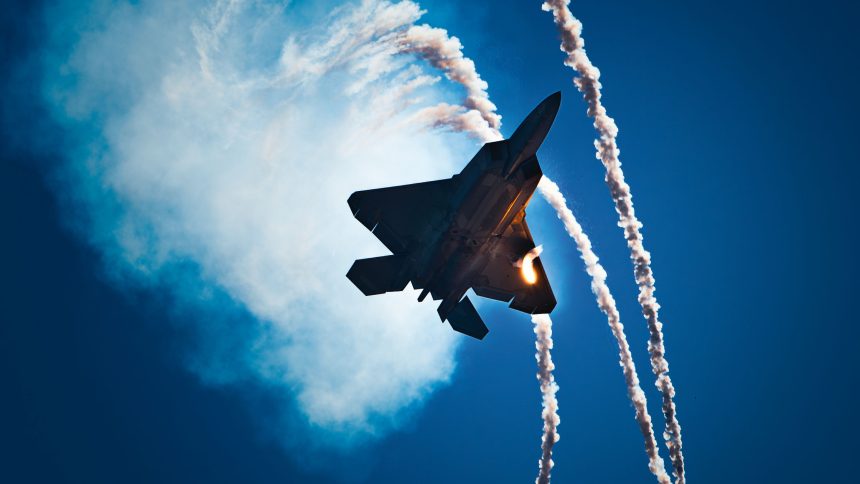Let’s take a look at some of the most interesting details you might not have noticed on your favorite aircraft.
Across the variety of aircraft types operating worldwide past and present, there are a whole host of unusual, hidden, or under-discussed features, details, and curiosities that make for interesting stories. Going by aircraft type, we’ll explore some of our favorites from more modern aircraft in this article.
F-15 Eagle
We’re all familiar with afterburners, especially those that work in conjunction with a variable exhaust nozzle that adjust their shape to more efficiently produce thrust at different power ratings. On many modern fighter aircraft, the mechanisms that allow the nozzles to adjust their shape are protected by a shroud of smooth metal plates known as ‘petals’ or ‘turkey feathers’. This shroud, at least on some airframes, reduces disturbances in airflow and lowers overall drag.
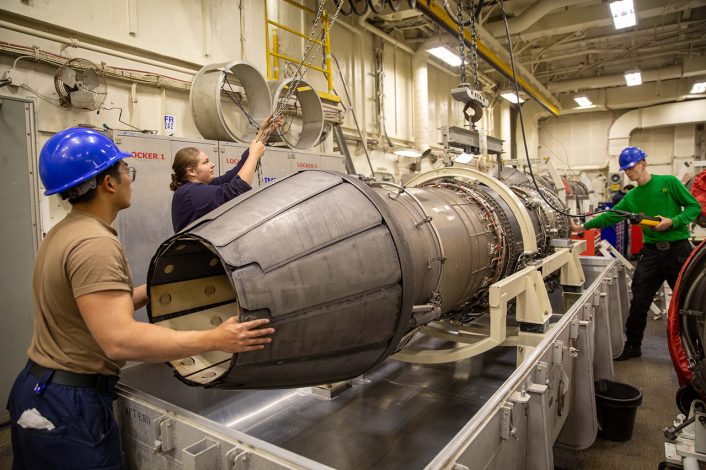
On many F-15s, though, it is readily apparent that no such petals are in use, and all of the actuators for the nozzles are plainly visible. This was not always the case, and when new, F-15s were usually delivered with these fitted. However, in U.S. Air Force use the loss of these panels during flight became a somewhat regular occurrence. Testing is also said to have concluded that, unlike on other aircraft, the petals did not significantly contribute to airflow issues on the F-15 airframe.
To save on costs from replacing lost petals, as well as to reduce the maintenance burden of having to install and uninstall the plates when working on the engine nozzles, the fleet gradually had them removed. This decision was not universal to all F-15 operators, and indeed some continued to operate their jets with them fitted. Israel’s F-15I Ra’am is one example where the petals are often still fitted. U.S. Air Force B-1Bs were also originally fitted with petals on their exhaust nozzles, and just like with the F-15 they now fly without them – presumably for the same reasons.
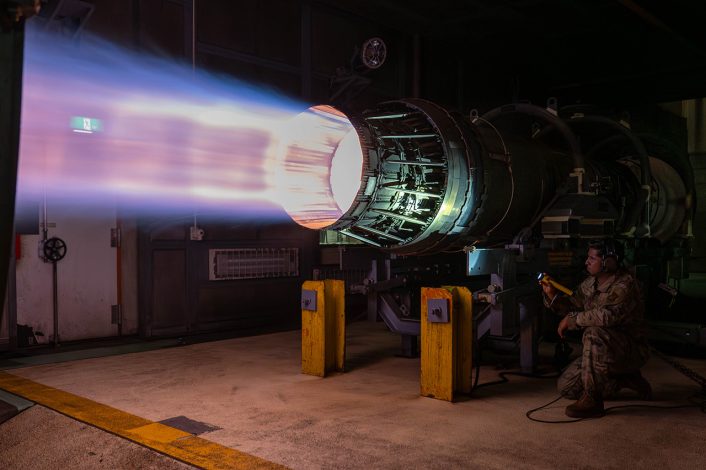
Additionally, the new F-15EX Eagle IIs have been delivered complete with them installed. It remains to be seen if these will be kept in the long term.
On the other end of the aircraft, the F-15 also features highly adjustable air intake ramps. As with the nozzles, these will adjust position according to the speed and power settings of the aircraft, as well as its angle of attack. This is so the engines can be supplied with optimal airflow at all stages of flight. A similar system will be found on many supersonic aircraft, though not all are as clearly seen as those on the F-15. Newer stealth designs frequently use diverterless supersonic inlets (DSI) instead, which use complex geometric shapes inside the intake to condition airflow instead of moving the inlets themselves.
What a fantastic clip. I think I’ve never seen the F-15’s air intakes at work so clearly: pic.twitter.com/dLGwfnAX7T H/T @rikizomisono
— The Aviationist (@TheAviationist) November 4, 2023
F/A-18 Hornet
While U.S. Navy and U.S. Marine Corps F/A-18 Hornets might pack an additional punch with the array of weapons and other capabilities available to them, they all lack one feature which is otherwise found on the Hornets of the Royal Canadian Air Force, Swiss Air Force, and Kuwait Air Force. Just forward of and below the cockpit on the port side of these nations’ aircraft is a sideways facing spotlight.
This incredibly powerful lamp, officially known as the Night Identification Light, is, as its name suggests, intended to be used to illuminate intercepted aircraft during dark nights so the Hornet’s pilots can make an informed identification. Online sources report the light’s brightness at 600,000 candelas, although according to a RCAF pilot in the video below it outputs 100,000 candelas. Whichever is the correct figure, the light would be extremely bright and potentially even blinding at close quarters.
The Hornet’s bigger sibling, the F/A-18E/F Super Hornet, also features its own interesting detail. When viewed from above, below, or directly ahead, you might notice that the Super Hornet’s underwing pylons do not actually face straight forwards, but are instead canted outwards by several degrees.
This was introduced with the Super Hornet upgrade as a result of the new aircraft’s larger, rectangular air inlets. More space was needed between the front of the inlets and whatever could be mounted on the pylon to allow for a safety margin during payload release or jettison. The angle off from centre is around 3.5 degrees.
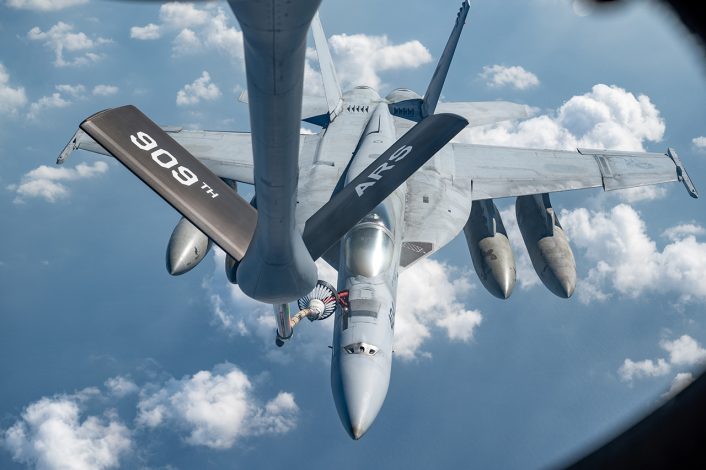
Though mainly required for the inner pylons, adjusting these had a knock on effect for all other underwing pylons, leading to all of them having the noticeable angle.
A-10 Thunderbolt II
The close air support focused legend is most famous for its huge GAU-8 Avenger 30mm rotary cannon. It’s commonly pointed out how this cannon is in fact mounted off-centre, with the aircraft’s nose gear also being offset in the opposite direction. The gun fires from the barrel that’s closest to the centreline as the gun rotates, so that the recoil is aimed dead straight down the aircraft’s body. But the A-10 has another interesting detail that goes comparatively unnoticed.
Because the ‘Warthog’ was designed to work low and slow, attacking hostile tanks and armored vehicles, it was always known that it would be vulnerable to anti-aircraft defenses. To mitigate this vulnerability, the aircraft was designed to carry up to 16 AN/ALE-40 chaff/flare dispenser units. With each unit able to pack a maximum of 30 chaff or flare rounds, this means a staggering total capacity of 480 individual countermeasures.
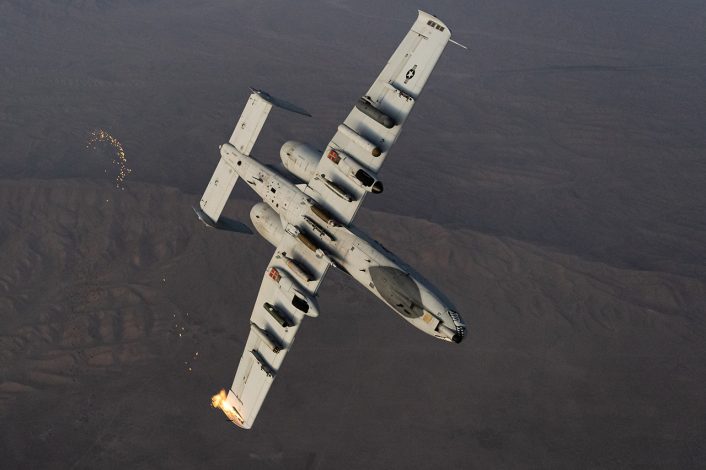
To fit all of these countermeasures, the AN/ALE-40 boxes are able to carried behind each main landing gear leg as well as on each wingtip. Each station provides for four boxes, though blanking plates can be used to cover any which are not presently in use.
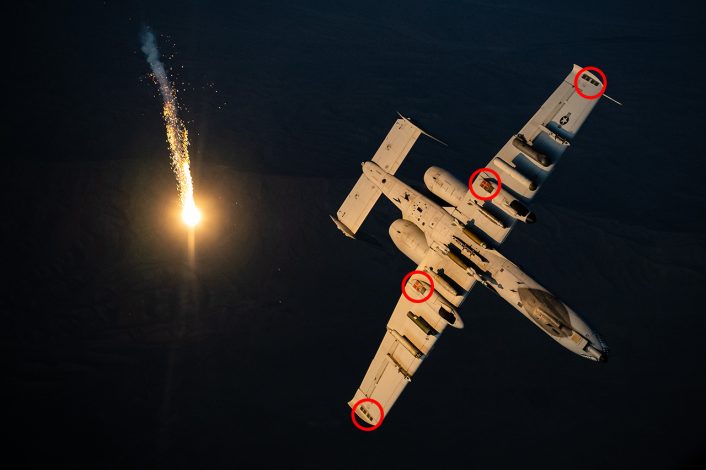
F-22 Raptor
The F-22 is one of the most iconic fighters currently operating, and, thanks to its incredible maneuverability, is a hotly anticipated act at any airshow at which it appears. Helping with that maneuverability, as well as the two-dimensional thrust vectoring, is an intricate wing design that is most noticeable when viewed from head on.
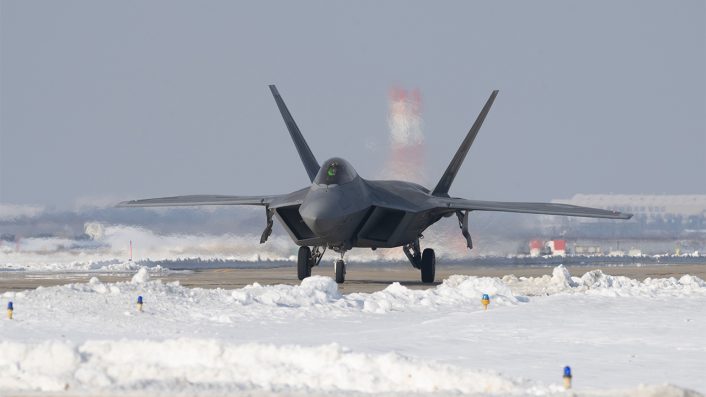
Towards the outer edge of the wing, a pronounced ‘twist’ is clearly visible. At the root, the F-22’s wing was designed with a positive angle of incidence. This gradually moves to a negative angle towards the outer edge, allowing for an aerodynamic effect known as washout. This design ensures that, at low speeds, the wing tip stalls much later than the wing root. As the aircraft’s ailerons are much closer to the wingtip, the negative angle of incidence allows them to maintain effectiveness at much lower speeds, preserving maneuverability when operating close to stall speed.
This type of design is far from unique to the F-22 – it is also quite evident on the F-35 Lightning II, and you can also see it by looking at the angle of wingtip mounted missiles on other aircraft in comparison to the rest of the wing. The fundamental concept dates back to the early days of flying, when lifting surfaces were still controlled by physically flexing them. Second World War fighter designs like the Supermarine Spitfire also made use of the concept. However, the design is particularly pronounced on the F-22, leading many to wonder why the wing was designed in this way.

Also not unique to the F-22, though much more exclusive to stealthy aircraft designs, is the fact that the jet’s countermeasure dispensers are hidden behind doors. These open to allow for countermeasures to be released, similarly to how the F-22’s gun is covered by a door until it is required. This is, of course, to help reduce the aircraft’s radar cross-section.
F-35B Lightning II
Unique to the short take-off and vertical landing (STOVL) variant of the F-35 Lightning II is a control system that was influenced by previous STOVL designs like the Harrier. When in STOVL mode, you can see a small door opens up in the root of each wing.
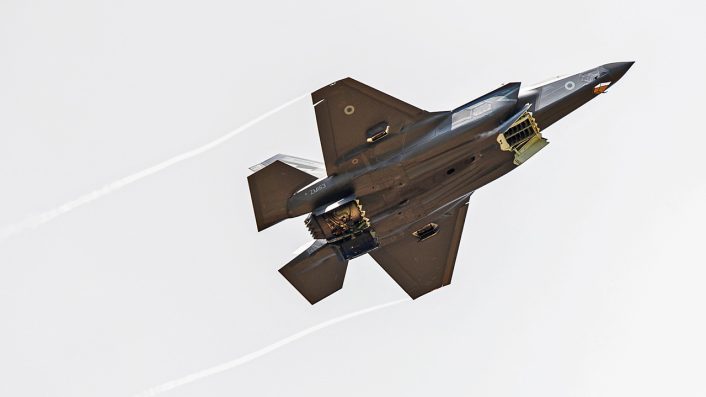
Inside these doors are nozzles that are fed by bypass air from the engine that are vital for maintaining control of the aircraft when its operating speed is too slow for control surfaces to have a meaningful effect. These nozzles, known as roll posts, are an integral part of the Rolls-Royce LiftSystem, which otherwise comprises the main, swiveling engine exhaust, the lift fan, and a driveshaft which can divert 29,000 horsepower to the liftfan from the main turbofan when required.
How do you achieve a vertical landing for @theF35 B? By using our #LiftSystem https://t.co/iNNIgvJVpr pic.twitter.com/C4T0p0xaqk
— Rolls-Royce (@RollsRoyce) July 7, 2016
On the older Harrier, a bleed air-powered reaction control system provides four individual control points – the nose, tail, and each wingtip. The wingtip nozzles can provide upward and downward thrust, while the tail nozzle allows control in three directions, controlling pitch as well as the aircraft’s yaw. On the F-35B, the requirement for dedicated pitch and yaw control functions is mitigated by the swiveling main engine nozzle and the use of the lift fan.
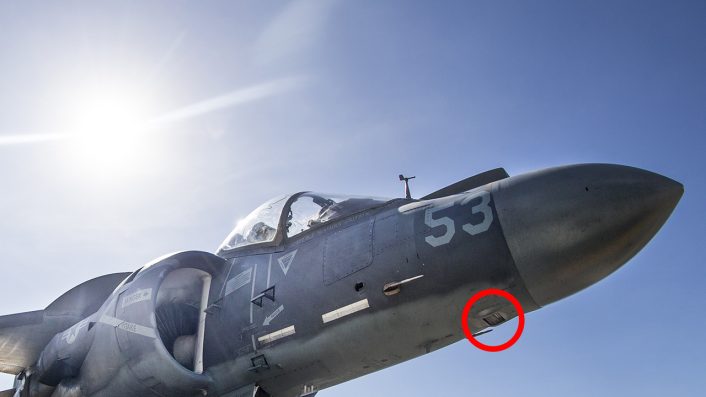
Eurofighter Typhoon
The European multi-role fighter has a number of details that commonly raise questions among enthusiasts. Whether it’s the auxiliary power unit (APU) exhaust soot where the upper surface of the wings meet the main fuselage, or the gun port which, like with Second World War fighters, is sealed with a frangible cover until the gun is fired, the Typhoon has a lot of interesting characteristics.
One feature you will find on the Typhoon is an advanced array of defensive aids, known as the Praetorian Defensive Aid Sub-system (DASS). As well as laser and radar warning devices, and flare and chaff dispensers, the system also includes the pods fitted to each wingtip. One side houses electronic countermeasures (ECM) technology, while the starboard pod houses two towed radar decoy devices.
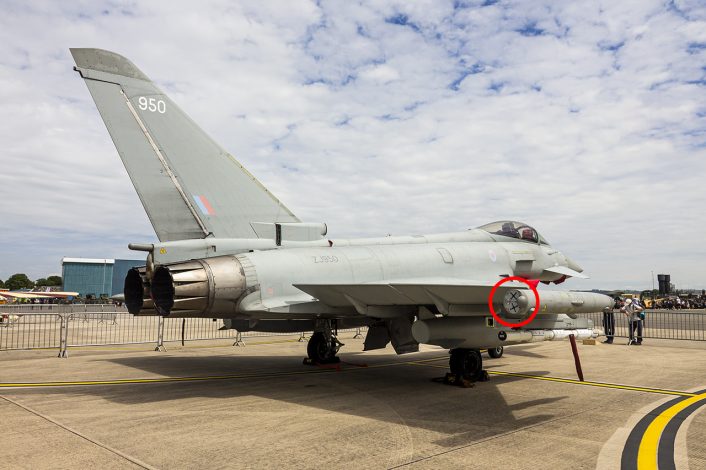
Towed radar decoys are designed to jam the radar homing systems of missiles, while safeguarding the aircraft itself from missiles with a home-on-jam capability by being towed up to 100 meters behind the jet. These decoys can be used during intense maneuvering and at high speeds, and can be jettisoned or retracted as necessary. The capability is not unique to the Typhoon, but the Typhoon’s implementation is an uncommon one. Older designs like the F-16 carry their towed decoys in retrofitted pods, while newer stealth designs keep them hidden away behind doors.
Westland Lynx & AgustaWestland Wildcat
The first and only helicopter on this list, the Westland Lynx is famed for still holding the record to this day for fastest production helicopter (excluding non-traditional designs, like compound helicopters). It is also one of the few helicopter designs in the world to be regarded as fully aerobatic, able to perform loops and barrel rolls.
Lynx helicopters were produced in two main forms – the naval Lynx featured a wheeled undercarriage, while the battlefield Lynx was fitted with skids (except for the Lynx AH9). For this, we will be focusing on the naval Lynx, which served the Royal Navy between 1981 and 2017, and still operates with a number of naval air arms today. The feature in question is also present on the Lynx’s successor, the AgustaWestland Wildcat – a design heavily derived from the Lynx.
Taking after the older Westland Wasp, which featured a distinctive setup of four wheels individually mounted on each corner of the aircraft, the Lynx’s two main wheels are able to be pivoted, or toed, up to 27 degrees out from the forward position.
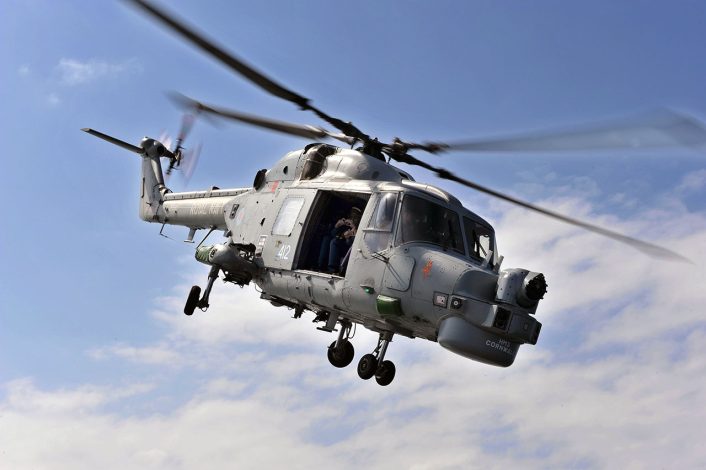
As well as providing some extra stability during landings on small helicopter decks at sea, the ability to pivot these wheels made it far easier for the aircraft to be maneuvered on the ground. The nose gear can also turn to 90 degrees, which, in combination with the rear wheels in the toe-out position allows the helicopter to be spun completely on the spot without disengaging the deck-lock harpoon system. This is useful for positioning the aircraft to face the wind prior to take-off, or for recovering the helicopter back into the hangar if it landed facing off-centre. Once facing into the hangar, ground crews can rotate the wheels back to the forward position and wheel the aircraft straight in.
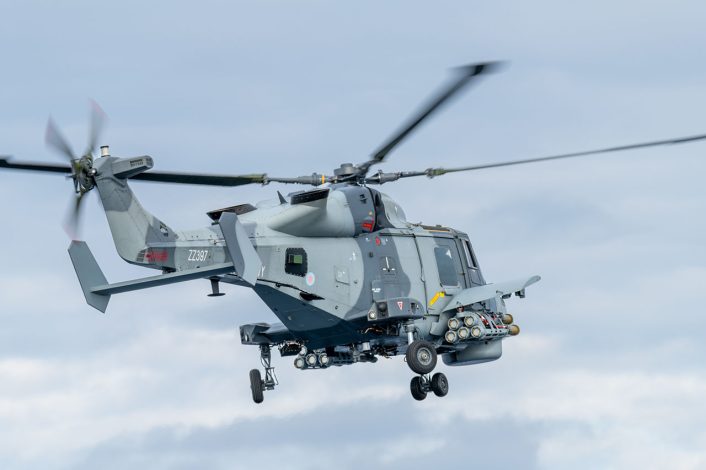
That rounds off this list, but please do let us know whether you would like to see more content like this article. We have plenty more interesting details to go through!

